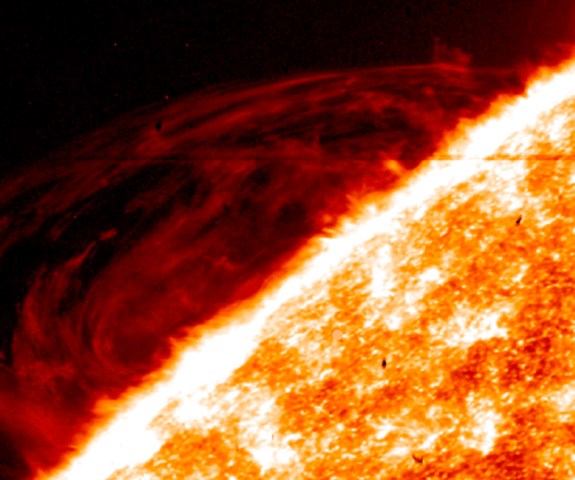Stare At The Sun All You Like With Spectacular New Images From IRIS
Carol never wore her safety goggles. Now she's missing out on some awesome space pics.

Ever since IRIS opened its telescopic doors on July 17th of this year, it’s been hard at work getting us awesome photos of the Sun so scientists can get a better look at its surface. We saw the telescope’s very first pictures about four months ago, but they were still kind of rough at that stage. Now we’ve got better ones, and boy, are they gorgeous.
IRIS (which stands for Interface Region Imaging Spectrograph), like all solar observatories, hones in on different layers of gas above the sun’s surface by capturing light emitted by atoms of different temperatures. In particular, Iris specifically looks at the interface region, a mysterious layer between the Sun’s surface and its corona, or outer atmosphere. This mission marks the first time that we’ve really been able to investigate the interface in depth, and it appears to be a much more turbulent and violent layer than scientists originally thought.
“We are seeing rich and unprecedented images of violent events in which gases are accelerated to very high velocities while being rapidly heated to hundreds of thousands of degrees,” Bart De Pontieu, the IRIS science lead, said in a news release put out by NASA. Members of the IRIS team from Lockheed Martin presented some of their early findings at at the Fall American Geophysical Union meeting this morning. “These types of observations present significant challenges to current theoretical models.”
Depontieu is especially interested in two types of events that occur on the sun — a prominence (pictured above), which is when cool regions within the interface rise up above the solar surface in giant loops. The other, a spicule, is when giant gas fountains as long as Earth’s diameter zoom up from the Sun’s surface at ridiculous speeds — almost 150,000 miles per hour. The latter event might have a part in distributing heat and energy throughout the Sun, the team at Lockheed Martin thinks. Hopefully the longer IRIS has its eye fixed on the Sun’s interface, the more new stuff we’ll learn about how spicules and prominences operate and how they might affect us on the Earth.
(via Phys.org and NASA, image via NASA/LMSAL/IRIS)
- Chris Hadfield is going to be performing in the Nutcracker Ballet because why not?
- Learn more about the fascinating world of space law
- This video of Saturn is made up of a million photos
Have a tip we should know? tips@themarysue.com